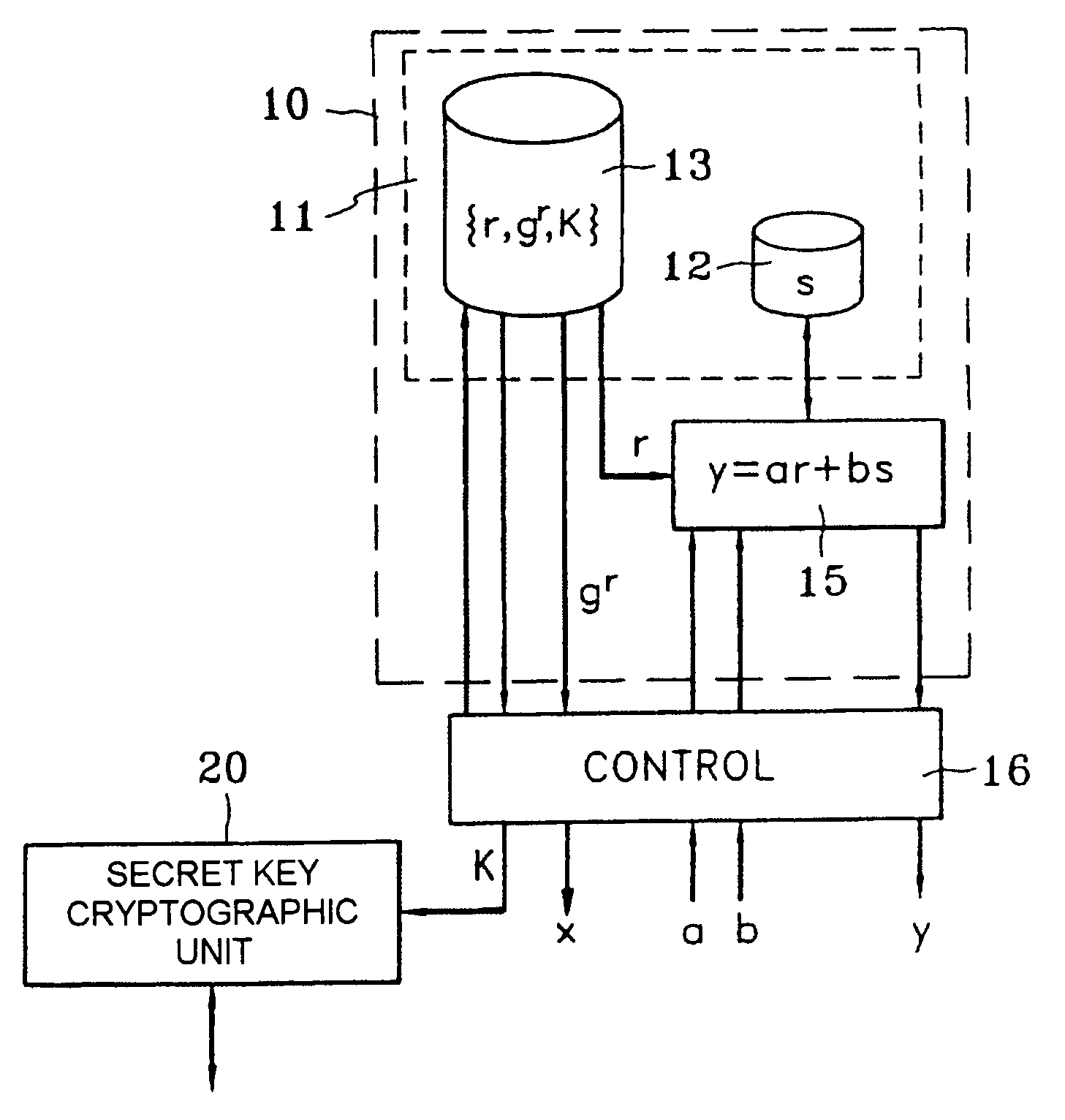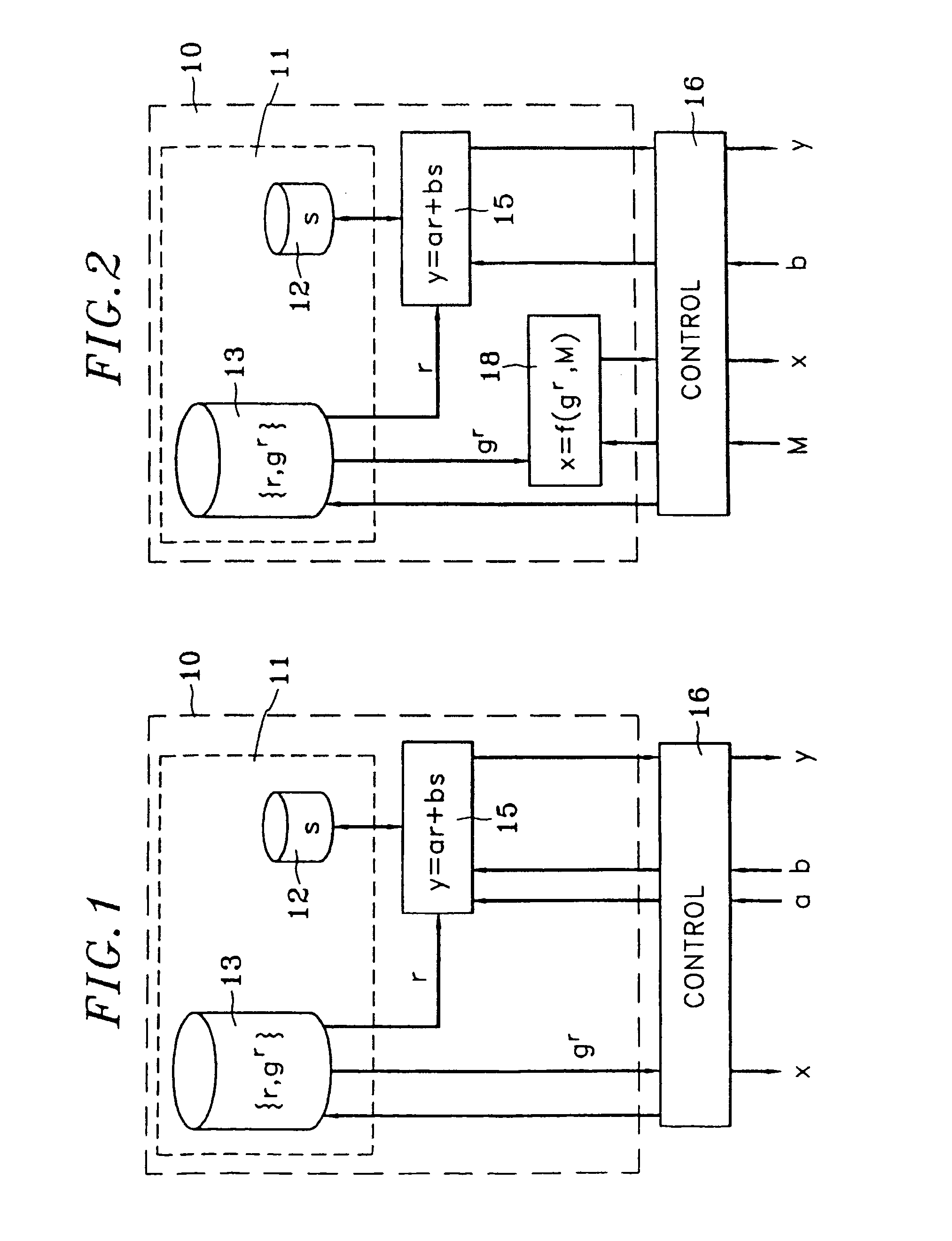Method of producing a cryptographic unit for an asymmetric cryptography system using a discrete logarithm function
- Summary
- Abstract
- Description
- Claims
- Application Information
AI Technical Summary
Benefits of technology
Problems solved by technology
Method used
Image
Examples
Embodiment Construction
[0030]Considered below is a family of entity authentication protocols, with extensions to the authentication of messages and to the digital signature of messages, and of protocols for exchanging keys all implementing a common component. The authenticity of a public key of an entity A used by another entity B is assumed to have been verified previously by this entity B.
[0031]Let G be a set provided with a multiplication operation and g be an element of G. The secret key of the entity A is an integer s. It should be noted that the size of this integer s (number of bits of its base 2 decomposition) is independent of G and of g. The public key associated with s for the entity A is the pair {g, v}, where v=gs.
[0032]In an exemplary embodiment of the invention, the authentication of entity A by entity B takes place as follows:[0033]1. A randomly picks an integer r, calculates x=gr and sends x to B;[0034]2. B randomly picks two integer operands a and b, and sends them to A;[0035]3. A calcul...
PUM
 Login to View More
Login to View More Abstract
Description
Claims
Application Information
 Login to View More
Login to View More - R&D
- Intellectual Property
- Life Sciences
- Materials
- Tech Scout
- Unparalleled Data Quality
- Higher Quality Content
- 60% Fewer Hallucinations
Browse by: Latest US Patents, China's latest patents, Technical Efficacy Thesaurus, Application Domain, Technology Topic, Popular Technical Reports.
© 2025 PatSnap. All rights reserved.Legal|Privacy policy|Modern Slavery Act Transparency Statement|Sitemap|About US| Contact US: help@patsnap.com



